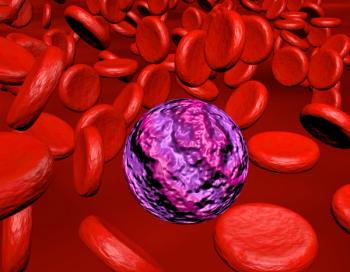
- Oncology Vol 30 No 4_Suppl_1
- Volume 30
- Issue 4_Suppl_1
(S007) Results of a Phase II Trial Using Cetuximab Plus Docetaxel With Low-Dose Fractionated Radiation for Recurrent Unresectable Locally Advanced Head and Neck Carcinoma
From our institutional experience, low-dose RT in addition to docetaxel and cetuximab is well tolerated. More durable treatment options may exist for definitive treatment; however, this protocol may offer low-morbidity palliation in select patients.
Vivek Patel, MD, Deukwoo Kwon, PhD, Michael Samuels, MD, Nagy Elsayyad, MD, Laura Freedman, MD, Donald Weed, MD, Elizabeth Franzmann, MD, Emeka Ikpeazu, MD, PhD, Gustavo Fernandez, MD; University of Miami
PURPOSE: After curative treatment, local failure remains a problem in advanced head and neck cancer. Chemotherapy, generally considered the standard salvage treatment, produces less than a 50% response rate. Surgical salvage is not always feasible, due to disease location. Radiation therapy (RT) in combination with chemotherapy was evaluated in various studies, including RTOG 96-11 and 99-11, with an improved treatment response at the cost of morbidity. Our study evaluates whether low-dose RT in addition to docetaxel and cetuximab improves the response rate of patients with recurrent, unresectable, squamous cell carcinoma of the head and neck while avoiding the significant morbidity/risk of re-irradiation.
MATERIALS AND METHODS: Between October 2013 and February 2015, seven patients signed consent, with five treated in this phase II study. All patients received cetuximab at 400 mg/m2 as a loading dose 1 week prior to RT and then at 250 mg/m2 weekly. Docetaxel was given at 20 mg/m2 once a week on day 1 of weeks 2 and 7. RT consisted of 0.5 Gy/fx BID at least 6 hours apart on days 2 and 3 of weeks 2 to 7, for a total dose of 12 Gy.
RESULTS: The median prior RT dose was 70 Gy. All patients completed protocol treatment. At the 1-month follow-up, partial response was seen in three patients (60%), stable disease was seen in one patient (20%), and progressive disease was seen in one (20%) patient. By 6 months, four patients (80%) underwent full re-irradiation as salvage treatment at progression. All patients had grade 1 skin rash, attributed to chemotherapy. There was one patient with grade 2 skin and hematologic toxicity. All patients had symptomatic improvement during treatment.
CONCLUSION: From our institutional experience, low-dose RT in addition to docetaxel and cetuximab is well tolerated. More durable treatment options may exist for definitive treatment; however, this protocol may offer low-morbidity palliation in select patients.
Proceedings of the 98th Annual Meeting of the American Radium Society -
Articles in this issue
Newsletter
Stay up to date on recent advances in the multidisciplinary approach to cancer.


















































































